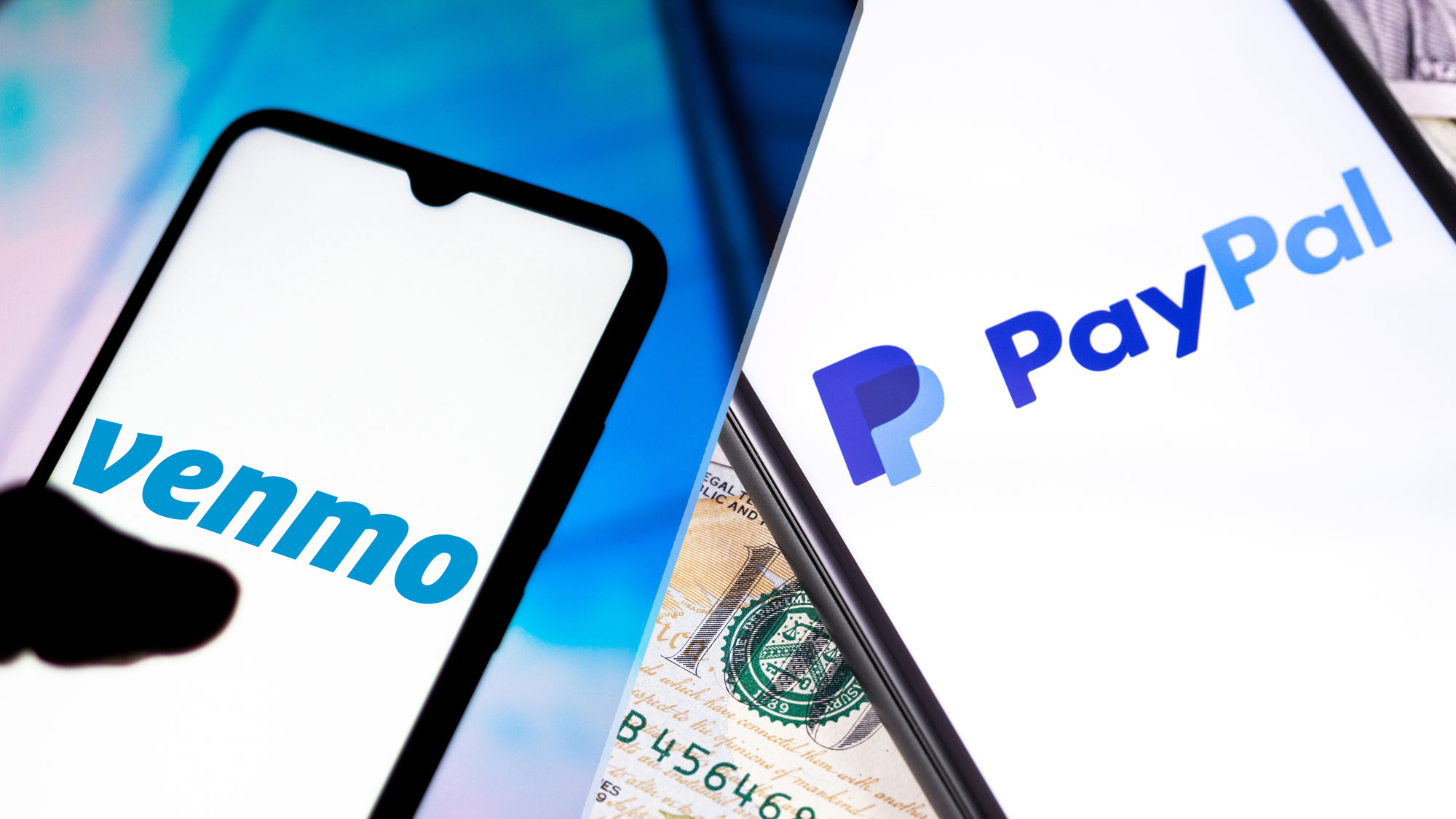Venmo vs PayPal: Which mobile payment app is right for you?

The battle between Venmo vs PayPal isn't truly much of a fight, since both mobile payment apps are part of the same company. PayPal bought Venmo in 2013 but kept it as a separate entity.
The digital wallet apps are very similar. They both easily and securely transfer money between bank accounts and process credit card transactions. They're also free for personal use. But there are key differences; for instance, PayPal now offers business financing options, like lines of credit.
- Second stimulus check calculator: See how much you get
- Best budgeting and personal finance apps
PayPal is a pioneer in the online payment space. It was founded in 1998 specifically to handle online commerce, bought by eBay, then spun off into a separate company.
Venmo began in 2009 and targeted everyday, personal payments. The app also has a social component in its newsfeed of transactions, which can be shared publicly or with a network of friends or restricted via privacy settings. Venmo was acquired by Braintree in 2012, then Braintree was acquired by PayPal a year later.
Some people only use Venmo, others only use PayPal, while many give and receive money on both. Venmo has become especially popular with younger users and the brand has become a verb ("Venmo me").
Here's our guide to the Venmo vs PayPal and which money app might be the best fit for you.
Venmo vs PayPal: At a glance
| Header Cell - Column 0 | Venmo | PayPal |
|---|---|---|
| Payment types | Bank transfer, credit, debit | Bank transfer, credit, debit |
| Bank transfer fee | Free | Free |
| Credit/debit card fee | 3% | 2.9% + $0.30 |
| Transfer limit | $4,999.99 | $10,000 |
| Withdrawal time | 1 business day | 1-2 business days |
| Availability | U.S. only | 200+ countries |
| Platforms | iOS, Android | iOS, Android, web |
Venmo vs PayPal: Payments and limits
Venmo and PayPal allow users to transfer money using their account balance, bank accounts and credit/debit cards.
Get instant access to breaking news, the hottest reviews, great deals and helpful tips.
New Venmo userss have an initial person-to-person sending limit of $299.99. Once their identity is confirmed, that increases to a weekly rolling limit of $4,999.99.
Since PayPal is integrated into many e-commerce sites, the transaction limit is higher at $10,000.
Venmo vs Paypal: Fees
It's free to sign up for either a Venmo or PayPal account and the mobile apps are also free to download.
Both services offer free account balance and bank transfers. But they both charge a fee for credit card purchases: PayPal's is 2.9% of each credit/debit card transaction plus $0.30 (in the U.S.) and Venmo's is 3% for credit card transactions (none for debit card purchases).
Venmo and PayPal both charge for instant transfers, as well. Venmo has a one-business day withdrawal window, while PayPal's is one to two business days. For instant transfers, both services add a 1% fee with a maximum of $10.
Venmo vs Paypal: Availability and platforms
Venmo is available only on mobile via iOS and Android apps. It's limited to the U.S. Meanwhile, PayPal is available on iOS, Android and by web browser in more than 200 countries and 25 currencies.
Venmo vs PayPal: Security and protection
Both Venmo and PayPal have secure, encrypted transactions and monitor accounts for fraudulent activity.
Venmo clearly positions itself for transferring money, person-to-person, between friends and acquaintances. The service states this on their site: "Venmo should only be used to transact with people you know. Do not use Venmo to pay or receive payments from people you don’t know, especially if the payment involves the purchase or sale of a good or service."
Venmo does not offer buyer or seller protection, which it also states in their policies: "Venmo does not offer a buyer or seller protection program for transactions conducted using the Venmo app or Venmo.com, regardless of the nature of the payment (or charge), unless expressly offered to you by Venmo."
Since PayPal is used for e-commerce, it does offer buyer and seller protections (listed here), such as 24/7 monitoring, fraud prevention and dispute resolution.
Venmo vs PayPal: Features
Venmo isn't just an online payment platform; it's part social media. Users can scroll through and comment on a newsfeed of transactions from their Venmo network of contacts and share their own transactions (or not, which they can manage through their privacy settings).
While PayPal can be used for personal transfers, it offers a ton of features for businesses such as its "Business in a Box" plan that includes payment processing and financial tracking. PayPal also offers business and working capital loans.
Venmo vs PayPal: Which is the right payment app for you?
Venmo and PayPal are so similar that most people can use either for their regular, everyday money transferring needs. They both link to bank accounts, charge for credit card purchases and offer fast withdrawal times.
Venmo may be the better fit if you want to make simple transfers to friends, like splitting a restaurant tab or paying your half of the electricity bill. Younger users may like the social aspect of seeing and commenting on their network's transactions.
PayPal is the best choice for transferring large amounts of money and sending money overseas. It's also the more secure option for business purchases and sales since they offer buyer and seller protections.
- The best tax software for 2021

Kelly is the managing editor of streaming for Tom’s Guide, so basically, she watches TV for a living. Previously, she was a freelance entertainment writer for Yahoo, Vulture, TV Guide and other outlets. When she’s not watching TV and movies for work, she’s watching them for fun, seeing live music, writing songs, knitting and gardening.
